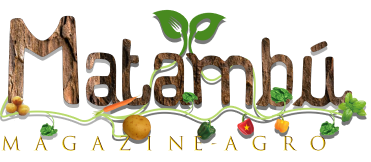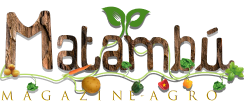[ad_1]
The Technology Innovation Agency helps bridge the gaps in the analysis and growth of agricultural applied sciences in South Africa.
Photo: Supplied
The Department of Science and Innovation’s (DSI) Bio-economy Strategy goals to drive South Africa’s bio-economy by the utilisation of the nation’s numerous pure sources to enhance human well being, handle meals safety and contribute to financial development.
The technique additionally seeks to make use of South Africa’s bio-based sources to create and develop biotechnology-based industries. This is essential for creating jobs, contributing to GDP, boosting exports, constructing industries and addressing market failures.
The Technology Innovation Agency (TIA), an entity of the DSI, performs an essential function in the implementation of the Bio-economy Strategy. It is remitted by the Technology Innovation Agency Act (No. 26 of 2008) to advertise the event and use of improvements and applied sciences in the curiosity of the general public.
The function of TIA
Through its strategic bio-economy pillar, the TIA helps the interpretation of South Africa’s information sources into sustainable bio-based options that can have an effect on the convergence of particular focus areas, particularly well being, indigenous information techniques, agriculture, and industrial biotechnology.
In addition, the TIA manages cross-cutting know-how platforms, and know-how innovation clusters and programmes.
The agriculture sector is central to creating employment alternatives, fostering financial development, decreasing poverty, and enhancing meals safety in South Africa. In this regard, the TIA helps the event of applied sciences and improvements that promote meals security and safety, rural and township growth, and financial transformation, and those who create extra resilience to local weather change throughout the agriculture worth chain.
This is achieved by funding in strategic nationwide agricultural priorities and worth chain-focused initiatives to help the creation of an enabling atmosphere for technological improvements in the business, predominantly supporting the publicly funded growth and demonstration of agricultural know-how improvements, facilitating commercialisation of de-risked applied sciences, and enhancing the diffusion of acceptable agricultural applied sciences to small-scale and rising farmers.
The TIA has supported a start-up referred to as AgriViro in its growth and demonstration of mental property on the University of the Witwatersrand.
The TIA has funded AgriViro to develop novel biopesticides for the management of economically essential insect pests corresponding to codling moth (Cydia pomonella), false codling moth (Thaumatotibia leucotreta), the larvae of the African bollworm (Helicoverpa armigera), oriental fruit moth (Grapholita molesta), diamondback moth (Plutella xylostella), fall armyworm (Spodoptera frugiperda), in addition to Lepidopteran bugs on crops corresponding to peaches, nectarines, plums, cherries, apricots, apples, pears, quinces and nashi.
These environmentally pleasant biopesticides are appropriate to be used in natural farming, and their efficacy in opposition to insect pests in high-value crops has been demonstrated in a managed atmosphere.
Further developments
Other improvements in plant well being and vitamin supported by the TIA embody the event and commercialisation of adjuvants for the advantage of crop or plant well being.
iBATECH is an efficacious pure botanical adjuvant with antimicrobial properties.
It is formulated to guard vegetation in opposition to pesticide-resistant pathogens. This know-how was developed on the University of the Western Cape and is at present being demonstrated at a business scale.
iBATECH can be utilized in mixture with agrochemical pesticides, in tunnel settings, and in natural farming. It is cost-effective and reduces the dosage of agrochemical pesticide required. Furthermore, its software reduces residual pesticide ranges in crops and enhances agrochemical pesticide efficacy by reversing pesticide resistance.
Innovations in animal well being and vitamin have been supported and funded by the TIA for the improved well being of livestock, in addition to the development of diagnostic applied sciences to minimise the unfold of zoonotic illnesses.
The TIA funded the event of a point-of-care (POC) diagnostic check package for the early detection of foot-and-mouth illness (FMD) in livestock that can be utilized in distant and rural areas. The use of this know-how permits for the speedy detection of FMD and empowers livestock farmers to rapidly isolate affected animals, thereby stopping the unfold of the illness. This innovation was developed by the Council for Scientific and Industrial Research (CSIR) and was licensed to a start-up, TokaBio.
Currently, it takes every week or two to obtain FMD check outcomes from laboratories. The POC diagnostic package is a Fourth Industrial Revolution-enabled system that facilitates a speedy turnaround time for check outcomes. The outcomes are made obtainable in simply an hour on a cellular system.
The POC system can be related to the South African authorities regulator’s database, offering real-time data on the illness standing of livestock, thus including worth to authorities’s livestock illness surveillance programme.
The innovation can be at present being developed additional to incorporate the detection of avian influenza. The early detection of those illnesses has apparent financial advantages for each the rising and business livestock farmers who undertake this know-how.
Outside of South Africa, the POC know-how has been examined in Lesotho, Zambia and Rwanda.
Technology clusters
The TIA has established three know-how innovation clusters in agriculture, particularly the Animal Health Cluster, the Beef Genomics Programme, and the Dairy Genomics Programme. The Animal Health Cluster is geared toward stimulating and intensifying know-how innovation throughout the animal well being sector in order to extend the event and uptake of animal diagnostics and vaccines to market.
The institution of this cluster advocated for the participation of varied establishments throughout the National System of Innovation. These embody science councils and universities (with seed funding offered by the National Research Foundation and the TIA for analysis and growth), in addition to the personal sector and key state-owned entities corresponding to Onderstepoort Biological Products.
The TIA has additionally supported the event of an natural nutraceutical broiler feed enhancer, in addition to an antibiotic substitute additive that enhances poultry weight achieve by 30%.
These two merchandise have been registered for regulatory approval to be used in the market in 2016.
A collaboration between the CSIR and the Agricultural Research Council (ARC) for the event of a slow-release biocontrol sheet, to regulate fungi on produce throughout storage with out affecting the style or color of the produce, was funded by the TIA. Via natural means, the know-how controls phytosanitary illnesses corresponding to gray mould (Botrytis cinerea) in desk grapes, and can profit South Africa’s exporters of recent produce.
The TIA is the implementing agent of the Agriculture Bioeconomy Innovation Partnership Programme (ABIPP), which is a partnership between the DSI and business. This programme funds, facilitates and manages multidisciplinary and multi-institutional analysis programmes in agricultural bio-innovation, product and course of growth, and providers.
It encourages collaboration on nationwide priorities and promotes the worldwide competitiveness of the native agriculture sector by the utilisation of developed applied sciences and plant breeders’ rights.
The ABIPP not too long ago funded Cotton South Africa for its procurement of regionally made cotton-baler machines, which will likely be utilized by small-scale farmers to decrease their enter prices by between 8% and 12%. This intervention by the TIA is aligned with its mandate to help the diffusion of applied sciences to rising farmers for his or her elevated participation in the sector, in addition to their productiveness and profitability.
The TIA leverages partnerships and funding for its investments to make a tangible affect in the agriculture business. A notable instance of that is help it supplies to the National Agricultural Marketing Council for its mission titled ‘Feasibility Assessment: A value chain analysis of the cassava subsector in South Africa’, to judge high-starch-yielding cassava cultivars bred by the ARC and funded by the TIA.
The feasibility evaluation contains small-scale and rising farmers in rural and marginalised communities, in addition to farmers in the cassava manufacturing areas in Limpopo, Mpumalanga, and KwaZulu-Natal.
The outcomes of this examine will likely be accessible to farmers and communities and can support them in subsistence farming, meals and animal feed manufacturing, and industrial functions, such because the paper business.
The leveraged partnerships in the institution of this cassava worth chain are the Department of Trade, Industry and Competition, the South African Cassava Growers’ Association, and different events in the worth chain.
The TIA recognises that the agriculture sector is a key driver of financial development, most notably in the creation of employment and meals safety, in addition to a number of different advantages realised by the agricultural multiplier impact. Through the funding it supplies, it helps the event and commercialisation of native improvements and the related mental property, in addition to in-bound applied sciences.
Visit tia.org.za.
[ad_2]
Source link










